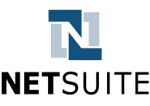 Investment bonds are a practical investment option for those who earn a high income and seek long term tax efficiencies.
Investment bonds are a practical investment option for those who earn a high income and seek long term tax efficiencies.
Investment bonds, also known as tax-paid, insurance or growth bonds, work similarly to a managed fund, except they are combined with an insurance policy. There is a ten year rule which allows tax free earnings on the bond if no withdrawals are made in the first ten years and contributions do not exceed 125% of the previous year’s contribution. Most investment bonds offer a range of investment options to cater for differing risk levels such as cash, fixed interest, shares, property or a range of diversified investment options.
Investment bonds are particularly suitable for high income earners with a marginal tax rate higher than 30% who want to build wealth without increasing their personal tax liability. They are also useful for estate planning purposes as beneficiaries other than dependants can be nominated and will not incur tax upon receiving proceeds.
An investment bond can be used as an investment structure for future financial needs of children such as education expenses. Alternatively, investment bonds can be used for supplementary retirement planning as investment bonds are not subject to preservation age, unlike superannuation investments, which may be more viable for those planning an early retirement.
Investments held in an investment bond are generally not subject to capital gains tax (CGT). Where an investment does not qualify for a CGT discount, the maximum tax rate of 49% may apply on earnings whereas an investment bond generates a maximum rate of 30%.
However, investment bonds do carry some risk that individuals should consider before making a decision. Common fees such as establishment, contribution, withdrawal, management, switching and adviser service fees may be applicable depending on your provider and the investment options you choose.
If you do choose to invest in an investment bond ensure you will be able to make regular contributions over the lifetime of the investment and can comply with the 125%. It is important to align your financial and estate planning goals with an appropriate investment structure suitable to your risk profile.
 The national rental affordability scheme (NRAS) started on 1 July 2008, encouraging large-scale investment in affordable housing. It offers tax and cash incentives to providers of new dwellings for 10 years, granted they are rented to low and moderate income households at 20% below market rates.
The national rental affordability scheme (NRAS) started on 1 July 2008, encouraging large-scale investment in affordable housing. It offers tax and cash incentives to providers of new dwellings for 10 years, granted they are rented to low and moderate income households at 20% below market rates.








